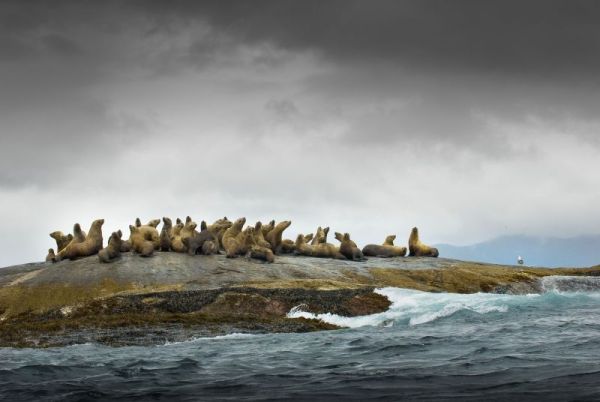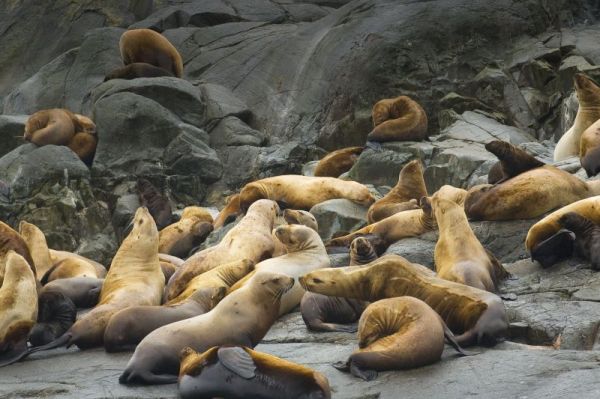Meet Our Species of the Month: the sea lion!
This blog series on Canadian wildlife explores key facts, threats and what WWF is doing to conserve these species. These Canadian species are also featured in the TELUS 2014 calendar. Check out the digital calendar and you can follow along with fun activities, download beautiful desktop wallpapers, colouring pages and more.
In Canada, the Steller sea lion can be found all along the coast of BC. Highly social animals, sea lions gather in large communities to hang out on rocky outcroppings near the shore. They move into the water to feed and cool off as needed.

© Andrew S. Wright / WWF-Canada
Did you know…
- Steller sea lions eat a variety of fish including Pollock, salmon, cod, Pacific herring and rockfish, as well as octopus and squids.
- Adult sea lions eat on average about 6% of its body weight every day.
- The deepest recorded dive for a Steller sea lion is 424 meters – they normally remain submerged underwater for no more than five minutes at a time.
- The Stellar sea lion is the biggest of all sea lions and can live up to 30 years.
- Sea lions are often mistaken for seals. They are easy to tell apart as sea lions have external ear flaps which close over their ears when diving to prevent water from entering, whereas seals have no external ears at all.
Why is the sea lion at risk?
Since 1980, more than 80 percent of the Steller sea lion population has disappeared, leaving the current wild population with less than 75,000 individuals. Determining exactly why Stellar sea lion numbers have disappeared has remained puzzling. Little is known about Stellar sea lions in the wild, partially because they are extremely skittish. Researchers studying sea lions suspect that their population decline is due to a combination of biological, physical and environmental factors. Sea lions are vulnerable to the effects of climate change on ocean currents, which impact the abundance of their fish prey. They are also victims of bycatch in fisheries and are prone to accidentally becoming entangled in fishing gear. Pollution, oil spills, and other contaminants also threaten their habitat.

What is WWF doing?
- WWF is working with coastal communities and the BC government to conserve and protect our marine ecosystems and resources. We are working with businesses to make fishing more sustainable and to reduce bycatch.
- The Great Canadian Shoreline Cleanup helps keep unwanted garbage pollution out of Stellar sea lion habitat.
You can read more about WWF’s work on oceans here. WWF-Canada and TELUS are partnering to support the conservation of Canadian wildlife and their habitats through a new $1 million, four-year partnership. Click here to learn more.
